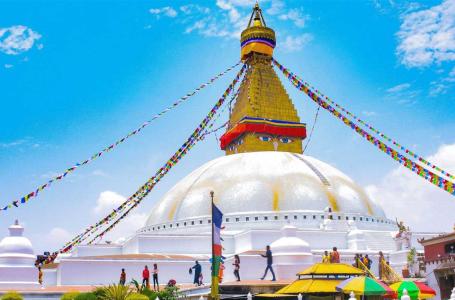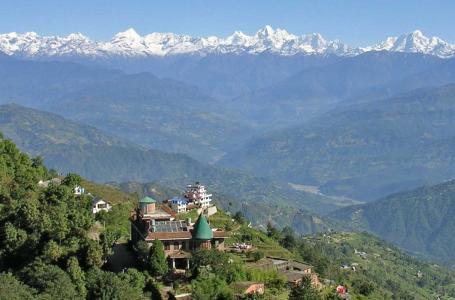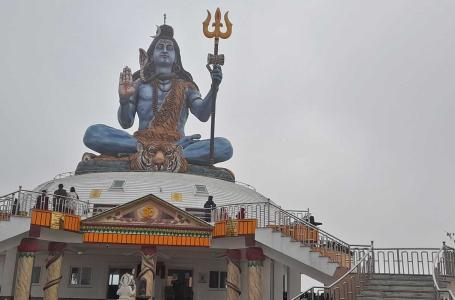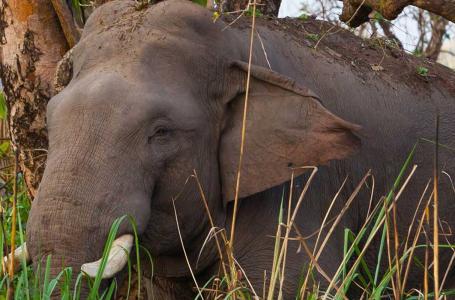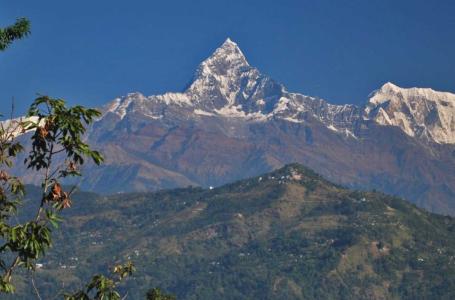The Annapurna North Base Camp Trek is a lesser-known but equally enchanting route to explore the mighty Annapurna massif. Unlike its southern counterpart, the popular Annapurna Base Camp Trek, this trek unveils the rugged beauty of the northern flanks of Annapurna, where fewer footsteps tread. It’s a journey into quiet wilderness, offering solitude, breathtaking views, and a chance to connect with nature and culture in a unique way.
This North Annapurna Base Camp Trek is perfect for those who want to escape the crowds and explore the raw beauty of the Himalayas. The trail feels like a hidden painting, where each step reveals a new shade of nature—be it dense forests, glacial rivers, or towering mountains that seem to touch the sky.
Imagine standing in awe of Annapurna I (8,091m) and Annapurna Fang, their snow-covered peaks glowing under the Himalayan sun. These majestic mountains feel so close that it’s as if they’re whispering tales of ancient times. Along the way, the trail winds through charming Gurung and Thakali villages, where locals welcome you with warm smiles and stories of their rich traditions. It’s not just a trek; it’s an opportunity to feel the heartbeat of Nepalese culture.
As you move higher, the trail leads you through lush green forests that feel like enchanted woods, eventually opening up to alpine meadows and rugged terrains. From wildflowers blooming in high-altitude pastures to the dramatic glaciers and rocky outcrops of the base camp, the trek offers a kaleidoscope of natural beauty. With its untouched and peaceful trails, far from the bustling trekking highways, you’ll hear the crunch of your boots on unspoiled paths and the melody of birdsong echoing through the valleys. For trekkers seeking solitude, this journey feels like a quiet conversation with nature.
Starting from small villages, the trail gently ascends through forests of rhododendron and oak. As you climb higher, the trees thin out, and the landscape opens up to reveal panoramic views of the Himalayan giants. The journey is not just about reaching the base camp—it’s about soaking in every moment, from the simple joys of sipping tea in a cozy lodge to the thrill of crossing a glacial stream.
At the Annapurna North Base Camp, you’ll stand in awe of the sheer scale of the mountains. It’s a humbling experience as if the peaks are guardians of an ancient world. The silence here is profound, broken only by the occasional rumble of distant avalanches.
The Annapurna North Base Camp Trek is more than just a trek; it’s a journey into the soul of the Himalayas. It’s about finding beauty in simplicity, learning from nature, and creating memories that stay with you forever. Whether you’re an experienced trekker or someone seeking a peaceful escape, this trek offers an unforgettable adventure. It’s a trail less traveled, yet rich with rewards for those who dare to explore. So, pack your bags, lace up your boots, and let the Himalayas welcome you with open arms.
The best time to visit the Annapurna North Base Camp is during the spring months of March to May and the autumn season of September to November. These periods offer the most stable weather, clear skies, and stunning mountain views. Spring brings vibrant rhododendron blooms, while autumn provides crisp air and excellent visibility of the towering Himalayan peaks.
The trek is classified as moderate to challenging, making it suitable for trekkers with a reasonable level of fitness and some prior trekking experience. The trail involves gradual ascents, rocky paths, and some high-altitude trekking, so preparation and acclimatization are essential.
Before embarking on this adventure, you will need to secure the necessary permits, including the Annapurna Conservation Area Permit (ACAP) and a TIMS card (Trekkers’ Information Management System). These permits help regulate trekking activities and ensure conservation efforts in the Annapurna region.
Welcome to Kathmandu, the vibrant capital of Nepal! Upon arrival at Tribhuvan International Airport, our team will greet you and transfer you to your hotel. Relax and explore nearby attractions like Thamel or enjoy authentic Nepali cuisine. Rest well because your Himalayan adventure is about to begin.
Early in the morning, you’ll embark on a tourist bus journey to Pokhara, the gateway to the Annapurna region. The drive offers picturesque views of lush hills, rivers, and terraced farms. Arriving in Pokhara, you’ll be captivated by the tranquility of Phewa Lake and the stunning backdrop of the Annapurna and Machhapuchhre (Fishtail) peaks. Overnight at a comfortable hotel.
Today, you’ll travel on a local bus or jeep to Tatopani, known for its natural hot springs. The ride takes you through winding mountain roads, offering glimpses of rural life and cascading waterfalls. Once in Tatopani, you can relax in the warm, healing waters of the hot springs—perfect for easing travel fatigue. Overnight in a teahouse.
Buckle up for a thrilling off-road journey to Hum Khola, a small village surrounded by towering hills and flowing rivers. The bumpy ride is an adventure in itself, with narrow paths, lush landscapes, and occasional wildlife sightings. You’ll reach Hum Khola by evening, ready to prepare for the trekking phase. Overnight in a basic lodge.
Your North Annapurna Base Camp trek begins! The trail to Sadi Kharka takes you through dense rhododendrons and oak forests, with occasional clearings that offer stunning views of the Annapurna range. The climb is gradual, allowing you to acclimatize. You’ll pass small settlements where locals greet you warmly, showcasing the hospitality of the mountains. Overnight in a tented camp.
The trail to Bhusket Mela becomes steeper as you climb higher into the alpine terrain. Along the way, you’ll cross suspension bridges, follow winding rivers, and enjoy views of snow-capped peaks. The higher altitude brings cooler air, but the sense of adventure keeps you going. Overnight in a tented camp near Bhusket Mela.
Today’s hike is shorter but incredibly rewarding. As you approach Panchakunda, the landscapes transform into rocky outcrops and meadows dotted with wildflowers. The air feels crisp, and the towering peaks seem closer than ever. Locals believe Panchakunda is a sacred site, adding a spiritual touch to the journey. Overnight in a tented camp.
This is the highlight of our North ABC trek! A relatively short hike takes you to the Annapurna North Base Camp, where you’ll be greeted by the awe-inspiring sight of Annapurna I (8,091m) and its neighboring peaks. The base camp feels like another world, with its glaciers, rocky terrain, and serene atmosphere. Spend time soaking in the views and capturing unforgettable moments. Overnight in a tented camp.
After a peaceful morning at the base camp, you’ll retrace your steps to Bhusket Mela. The descent feels easier, and you’ll have more time to enjoy the views and reflect on your achievement. Overnight in a tented camp, sharing stories of the trek with your group.
Today’s trail takes you back through familiar paths to Hum Khola. The surroundings, though seen before, feel different now, as if the mountains are bidding you farewell. The downhill journey is refreshing, and you’ll reach Hum Khola ready to celebrate the trek’s completion. Overnight in a lodge.
The bumpy ride back to Tatopani feels like a reunion with modern comforts. You’ll enjoy the hot springs once again, easing your tired muscles and letting the warmth sink in after days of trekking. Spend the evening relaxing and enjoying the cozy atmosphere of this small village. Overnight in a teahouse.
Heading back to Pokhara, you’ll feel a mix of emotions—relief, accomplishment, and nostalgia. The drive offers a final chance to soak in the beauty of the hills before you arrive in Pokhara. Once back, treat yourself to a delicious meal and perhaps a stroll by the Phewa Lake. Overnight at a hotel.
The journey back to Kathmandu offers time to reflect on your adventure. The bustling city feels like a different world after days in the remote mountains. Use the evening to explore Kathmandu’s streets or relax at your hotel. Overnight in Kathmandu.
It’s time to say goodbye. As you head to the airport, the memories of the Annapurna North Base Camp Trek will stay fresh in your mind. The mountains may be behind you, but their spirit will always be with you, calling you back for your next Himalayan adventure.
Trip Start and End Point
Kathmandu / Kathmandu
| DATES | STATUS | PRICE | SPACE LEFT | ||||
|---|---|---|---|---|---|---|---|
|
Start date: 14-Apr, 2025
End date: 27-Apr, 2025 |
Guaranteed | USD 1275 |
1
|
Book Now | |||
|
Start date: 03-May, 2025
End date: 16-May, 2025 |
Guaranteed | USD 1275 |
2
|
Book Now | |||
|
Start date: 13-Jun, 2025
End date: 26-Jun, 2025 |
Guaranteed | USD 1275 |
1
|
Book Now | |||
|
Start date: 18-Jul, 2025
End date: 31-Jul, 2025 |
Guaranteed | USD 1275 |
2
|
Book Now | |||
|
Start date: 27-Aug, 2025
End date: 09-Sep, 2025 |
Guaranteed | USD 1275 |
1
|
Book Now | |||
|
Start date: 09-Oct, 2025
End date: 22-Oct, 2025 |
Guaranteed | USD 1275 |
2
|
Book Now | |||
|
Start date: 13-Nov, 2025
End date: 26-Nov, 2025 |
Guaranteed | USD 1275 |
2
|
Book Now | |||
|
Start date: 10-Dec, 2025
End date: 23-Dec, 2025 |
Guaranteed | USD 1275 |
2
|
Book Now | |||
Clothing
Woolen shirts and thick sweaters for layering.
Warm jackets (fiber or down) to protect against cold.
Waterproof jacket with a hood or poncho for unexpected rain.
Tracksuit, trousers, and comfortable track shoes for trekking.
Thermal underwear and thermal coat for high-altitude temperatures.
Two pairs of loose-fitting long shorts or skirts for flexibility.
Pair of gloves and sandals for non-trekking use.
Woolen hat for warmth and long-sleeved shirts for layering and sun protection.
Footwear
Lightweight, sturdy walking boots (preferably broken in).
Two pairs of thin socks and two pairs of woolen socks for warmth and cushioning.
Accessories
Snow glasses or UV-protective sunglasses.
Trekking sticks to aid with stability on uneven terrain.
Duffle bag or kit bag for carrying trekking gear (provided by some trekking agencies).
Daypack for carrying personal essentials during the day.
Storage and Waste Management
Small and large plastic bags to separate clean clothes from dirty ones.
Smaller plastic bags for waste disposal.
Hydration and Hygiene
Water bottle (1–2 liters) and water purifying tablets to ensure safe drinking water.
Towels and moisturizer for lips, face, and body care.
Optional Items
Umbrella for light rain or sunshade.
Headlamp with spare batteries for nighttime use.
Binoculars for spotting distant views and wildlife.
Camera to capture memories of the trek.
Trekking map and compass for route awareness.
Miscellaneous
Reading materials, pencil, pen, notebook for leisure and journaling.
Yes, a licensed trekking guide is highly recommended. Not only do they ensure your safety and help navigate the trek, but they also provide valuable insight into the local culture and the stunning surroundings.
While the trek is moderate, it is not recommended for complete beginners. Some prior trekking experience is beneficial, as you'll be walking for several hours each day and gaining significant altitude.
You should pack lightweight, moisture-wicking clothing, a warm jacket, trekking boots, a daypack, and essential gear such as a sleeping bag, water bottle, and first-aid kit. Check our equipment list for a complete packing guide.
Unlike the classic Annapurna Base Camp Trek, the North Annapurna Base Camp Trek explores the less-traveled northern face of Annapurna, offering raw wilderness, fewer crowds, and breathtaking glacier views.
The trek features rugged alpine terrain, glaciers, high cliffs, and pristine rivers, with close-up views of Annapurna I, Annapurna IV, Lamjung Himal, and Machapuchare (Fishtail Peak).
Trekkers pass through traditional Gurung villages, where they can experience local hospitality, Buddhist monasteries, and centuries-old mountain traditions.
The North Annapurna Base Camp Trek is more remote and rugged, offering an authentic wilderness experience, whereas the classic Annapurna Base Camp Trek follows a more established and commercialized route.


